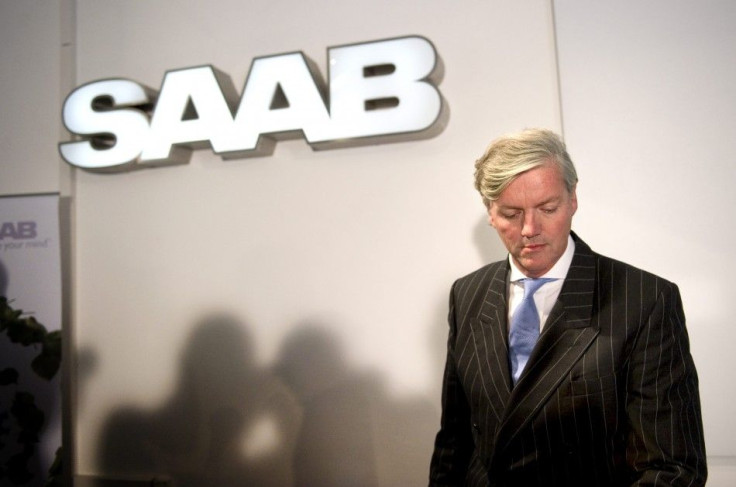Saab Bankruptcy: How GM's Missteps Let Down the Iconic Brand
ANALYSIS

Joe Wiesenfelder doesn't blame General Motors for Saab Automobiles' bankruptcy filing. Wiesenfelder, a Cars.com analyst who has been covering the ups and downs of Saab for more than a decade, can understand the backlash, though.
In the past day, much of the backlash has piled up against General Motors. Proverbial pitchforks in hand, they all lined up at the stake -- analysts, current owners, even multiple Swedish newspapers. They have centered on GM's rejection of a bid to buy Saab from Chinese auto company Zhejiang Youngman Lotus Automobile.
But Wiesenfelder said GM's decision was strictly business. One that any auto company would make. One that any auto company would have been crazy to accept.
GM wouldn't sign on to any deal that effectively handed GM's technology over to another company, particularly a Chinese company, Wiesenfelder said. They don't want to compete in the Chinese market -- where they already compete -- with their own technology. Automakers are extremely guarded with their intellectual property. They don't want it to fall in other hands. And I don't blame them for that.
The fury served only as the culmination, though, of what had been building up. Under GM leadership, critics claim, Saab lost its identity as the special, quirky brand. Under GM leadership, some Saab models became offshoots of other GM vehicles (think the 9-7X). Under GM leadership, one of Saab's primary pioneered assets -- turbocharged engines -- became a commodity as GM sat back and let the rest of the industry develop and improve them.
Now, Saab owners face a host of questions. For starters, Saab USA spokeswoman Michele Tinson told the International Business Times by phone Tuesday that the company has suspended warranties.
That's until we understand what the bankruptcy impact means to the U.S., Tinson said. We are still evaluating and determining the next steps in North America. For now, we have ceased warranties and incentives.
When Wiesenfelder looks at the Saab bankruptcy filing, he sees one of the more complicated brand discontinuations in recent memory.
In fact, this isn't a simple discontinuation. He pointed to the difference using the example of Ford, another U.S. automaker, halting production on the historic Mercury brand last fall.
Mercury is a division of Ford. But for what it's worth, they're mostly rebadged Ford models, Wiesenfelder said. There's no concern about things like parts and repairs. Ford is perfectly healthy. Even though Saab was owned by GM and uses GM tech and parts, Saab is an independent entity.
The lessons current Saab owners could take from the Mercury's shutdown, however, is the obvious depreciation that follows. It's worst for consumers that have purchased a Saab within the last year, who will see a huge loss if they try to flip the vehicle.
The market determines what a vehicle's worth, Wiesenfelder said. Whether new, used, or anything for sale, it's ultimately determined by the market and its demand.
Historically, when auto companies have been discontinued, their products are perceived to be of lower value. Perception tends to become reality.
There's also the issue of repairs -- and the parts to aid in those repairs. Repairs present a host of problems. Standard parts will be an easy fix, but the tricky aspect comes with parts unique to Saab vehicles.
For now, the parts side of Saab Automobiles does continue, Tinson said. But she said it was too early to speculate on how much longer parts would be readily available.
It's just too premature to comment on the future position for current owners at this point, she said.
Wiesenfelder also worries about Saab owners' dealings with insurance companies upon accident or collision. The insurance company under which the owner's Saab is registered would be more likely to claim it as totaled and hand the owner an undervalued check, he said.
Two GM spokespeople did not return calls requesting comment on a host of these issues.
But they all add up to an excess of concern that precipitates the relatively volatile attitude toward GM since Saab's bankruptcy filing.
As the former owner of a Saab, Wiesenfelder understands that attitude. He's seen GM's various missteps that contributed to the Saab brand's decline and eventual bankruptcy. After GM bought half-interest in Saab in 1990 -- and, eventually, the rest -- it arguably saved the Saab brand.
But then GM tried to make Saab into something larger than that niche, quirky brand. It failed. Wiesenfelder points to the Saab 9-7X as the example of GM robbing Saab of its individuality. An offshoot of the Chevy Trailblazer, it quickly became the Trollblazer.
And it served as the microcosm of the larger problem.
Their approach was wrong-headed, and I think some people within GM would admit that, Wiesenfelder said. They tried to make it into larger brand.
© Copyright IBTimes 2024. All rights reserved.











